|
When I learned that I'd be attending Language Advocacy Day (aka LAD) in Washington as ACTFL TOY, I didn't know what to expect. To be honest, I grew up in a home where making your voice heard on government matters involved holding up signs at marches (or at our tiny town's dump, the local gathering spot!) and writing letters to the local paper -- not sitting down with lawmakers and talking to them. I also felt a bit distant from the term advocate. It sounded like something that other people, People Who Knew Things about Government, would do. Me, I'm just a middle school teacher. It turns out, rather like Monsieur Jourdain of Le Bourgeois gentilhomme, who learns in middle age that he's been speaking prose his whole life, I am an advocate. And if you're reading this blog, well, you probably are, too. Here is a brief quiz if you're feeling unsure: • Do you think that Congress should fund world language learning? • Do you think that world language teachers should receive the same student loan forgiveness benefits as other shortage-area teachers (eg STEM, SPED)? • Would you like to see more support for implementing the Seal of Biliteracy in your state? If you answered YES to one or more of these questions, you should seriously consider blocking off February 4-5, 2021 on your calendar. That's when the next Language Advocacy Day takes place. There are three parts to the event, which is meticulously planned (amazing guest speakers! mentor-mentee program! gourmet food! state-based email groups! glossy program full of important information! awards reception! a customized schedule for you to visit your Senators and Congressperson! swag!).
On Day 1, our group of 200+ gathered in the morning to learn about legislative priorities regarding language-learning. This was a bit overwhelming for a newb like me, who responds to online JNCL Action Alerts but doesn't know the lingo or how face-to-face visits work. I learned a lot by watching Amanda Seewald role play Congressional visits with friendly, and then unfriendly, legislative aides...who were played by actual staffers on the Hill! We then practiced in groups how to make our asks, and how to succeed with them. I left feeling a bit more prepared, but still firmly gripping the dog-eared page of legislative asks in my program. The afternoon was devoted to Congressional visits. I had a detour in my schedule, as tradition calls for the Language Teacher of the Year to meet with the U.S. Secretary of Education. To say that I felt conflicted about this visit would be an understatement. It was important to me to wear a bright blue blazer adorned with a rainbow flag and MTA union pin so that I could express my values about public education for all young people in the US. Perhaps it was kismet that the President gave an off-script, "freewheeling" speech at the White House that afternoon, thereby tying up Secretary DeVos for the entirety of our scheduled meeting time. Instead I got to meet two career DOE employees who work in International Affairs, and DeVos' Deputy Secretary, Dr. Mick Zais. Unlike Secretary DeVos, who has a BA (insufficient to teach long-term in my state!) and no classroom teaching experience, Dr. Zais studied at West Point, has a PhD, retired from the US Army as a brigadier general, and was superintendent of South Carolina schools. I think that my Kentucky-born Army colonel father-in-law, also rather blunt and not impressed by my bleeding heart liberal values, provided me with good background for this meeting! Before the photo op at the end of our meeting, the General told me, "If my French teacher had been as pretty as you, I'd have learned a lot more French." Well, then. Next, I traveled with the Massachusetts delegations to the offices of Senators Warren and Markey, and with ACTFL Executive Director Howie Berman and past ACTFL TOY Ted Zarrow to the office of Representative Kennedy. As we made our pitches, the aides listened carefully. Some took many notes, others...not so much. Despite my skepticism that anything would come of these meetings, today I heard that Representative Kennedy has co-sponsored the BEST Act. That alone feels like a huge success from my perspective! The final part of LAD took place the next morning, when we enjoyed two amazing guest speakers and shared our experiences out on the Hill. I loved that Leslie Baldwin had us make a Flipgrid to recount our adventures from the experience. You can see my video for Massachusetts there, as well as many other great stories from the day! I am an advocate, and I have a new skill set thanks to this event. Thank you JNCL-NCLIS for sponsoring this tremendous Language Advocacy Day, and thank you ACTFL for including me in my role as TOY. UPDATE: Angelika Kraemer of Cornell's Language Resource Center interviewed me about LAD for the LRC podcast, Speaking of Language. Give a listen here.
0 Comments
Although my learning goals for ACTFL19 were overshadowed by TOY hoopla, I was pleased that I still got to attend several sessions, ALL excellent! It always helps me to recap my takeaways, so here's a brief summary of my learning in Washington. Striving for Global Competence in Today’s Political Climate with Pablo Muirhead I was in too much of a post-TOY fog to take any notes on this one, but I do remember that Pablo shared the Bennett model of cultural competency with us. He also had us do a fantastic, movement-based cocktail party simulation using different cultural norms. This was an interesting (albeit awkward!) way to see what it feels like to make conversation with folks who have different ideas about personal space, airtime, and polite greetings. Our middle school's world cultures teachers do this with 6th graders and say it makes for rich discussion. I was also touched that Pablo referred to my acceptance speech when he shared his feelings of vulnerability when speaking Spanish to his son in certain suburbs near his home in Milwaukee. Examples for Designing High-Quality Project-Based Language with NFLRC and Abby Carlisle from Meridian Academy I will admit that I initially chose this session because it's about going to Hawaii!!! (ahem, to learn about PBLL). Ironically, my biggest takeaway was meeting another Boston-area teacher who's exploring PBL in her classroom. Abby shared a great project called Museo para muchachos in which her students created a brochure for Spanish-speaking kid visitors to Boston's MFA. Stephen Tschudi of NFLRC shared a vast project repository with many in-depth examples of WL PBL projects - the best I've ever seen. Work-Life Balance Through Effective Minimalism in Assessment and Planning with Ashley Uyaguari I decided to attend this on the fly when I considered that, in my TOY year, I will probably need to more efficient and less over-the-top with my course planning. Plus I had not yet had the opportunity to congratulate Ashley on being selected as MaFLA's 2020 TOY! Although Ashley and I have very different approaches to curriculum and planning, I enjoyed chewing on this question during her session: Does assessment impact students’ proficiency? If not, why do we spend time on it? How could we spend less? Ashley also shared sample portfolios with student self-assessment documents, which I'd love to adopt in the future. Say “No” to External Rewards and “YES!” to Differentiated Instruction with Alice Lung & Valerie Aidan This session reminded me that I still haven't read anything by Alfie Kohn. As a parent and a teacher: I should! Lung shared this Kohn quote: “Rewards for learning undermine intrinsic motivation," and made the case that rewards do not promote a growth mindset. While I'm at it, I should also read Drive by Daniel Pink. I loved the classroom posters that Lung shared: these cover “guest etiquette” in her classroom, self-control, when students should and shouldn't use technology in class, and getting students to reflect before they ask for help. Spot-on for middle school teaching! • Grading to Promote Proficiency with Megan Budke and Karen Nickel Megan teaches at a SBG middle school. I love that she challenged us during her session by saying, "Let's get uncomfortable!" This really echoes Thomas Sauer's tweet before the conference: From this session, I'm think about setting a lower target for presentational speaking in my courses (as compared to other modes), and I'm questioning the role of homework (again!). According to Megan, the only homework that’s effective is personalized to that student, and we’ll never have time to create that for each learner. So, no homework for her students! Megan introduced me to the concept of replacement grading, where a later performance cancels out an earlier one within a term. Our department weights subsequent performances more heavily, but this is an approach for us to consider.
Erasing Margins and De-centering Whiteness in World Language Classrooms with Rhashida Hilliard and April Broussard I was very impressed by Rhashida and April's presentation at ACTFL18, so was eager to hear them speak again. They are among the few African-American presenters I've heard speak at world language conferences, and I'd love to see them leading full-day workshops for us in the future. This time, they shared: • Culturally-relevant teaching strategies and examples • Examining stereotypes in ads and providing counter-narratives to stereotypes • A helpful notetaker for reflection (useful for ANY session - I'm always looking to add to my toolbox of strategies for adult learners) I will write a separate post about my TOY journey, but wanted to get these learning reflections down before they are forgotten. Can't wait to keep learning across the country this year, and in San Antonio for ACTFL2020! Conference season is here! I had the privilege of spending a morning with some very thoughtful and cheery teachers last week. Here are the slides from the workshop and the accompanying handouts. In a nutshell, we defined authentic audience and real-world task before diving into two types of presentational work: polished and unpolished (aka on-demand). Then we explored appropriate prompts by ACTFL performance level. To top things off, I made a pitch for standards-based grading and provided models of single-point rubrics with "glow" and "grow" feedback so that students can level up their performances and use their feedback to "feed forward." Please share this information widely, and let me know what you think.
I hope you will notice that these slides are more professional than my earlier presentations. Thanks to working with master graphic designer Natalia DeLaat on an ACTFL session last year, and Dr. Kim Talbot's three helpful videos on how to level up a conference presentation, I think I'm moving in the right direction. I was also inspired by a Cult of Pedagogy episode called Let's Make Better Slideshows. It was an absolute career highlight to be interviewed by Jennifer Gonzalez for episode 131 of her Cult of Pedagogy podcast. In early 2019, I interviewed her for the We Teach Languages podcast and highlighted examples of her work that are highly relevant for world language teachers. This time the tables were turned, and I was in the hot seat! Jenn is an incredibly engaged and thoughtful interviewer, which made the experience a real pleasure. How often do we get to sit down with a curious educator from outside our field and talk deeply about our daily work and professional evolution? Jenn created this episode for anyone curious about the changes in our profession: teachers of other subjects, parents, students, and world language teachers less familiar with current best practices. As we were talking, I could hear myself quoting wisdom from many of my mentors and world language heroes. This post is a sort of annotated bibliography, extended footnote, link-fest, and all-around letter of appreciation to accompany the episode. In it, I provide additional background and resources that might not be of interest to those outside the field. I write with deep gratitude to those who have helped me improve my practice over the years, whether by writing books, giving presentations, coaching me one-on-one, sharing models that I could adopt, or chiding me gently when I needed a push. I organized the interview around the ACTFL Core Practices: Although not exactly the same, there is a lot of overlap between Core Practices and High-Leverage Teaching Practices outlined in the ACTFL book Enacting the Work of Language Instruction: High-Leverage Teaching Practices. You can check out the day-long workshop I gave on HLTPs at NECTFL 2019 with Dr. Catherine Ritz of Boston University here to learn more about how to enact each one in the classroom. Here is a deep dive into each of the six changes that I describe during the interview: 1. Use Target Language for Learning Thanks to Greg Duncan who taught me at MaFLA Proficiency Academy 2015 that students study world languages in order to speak them. Kudos to Colleen Lee-Hayes for her blog post, Thank You for Having an IEP, which I quoted directly during the interview. See my ACTFL 2017 presentation They, Too, Can-Do: Strategies and Accommodations for Diverse Learners on supporting diverse learners with research-based strategies. In addition: • ACTFL’s position statement on 90%+ target language use is worth a read. • Check out Inspired Proficiency Episode 1 of Season 3 with Ashley Uyaguari where I discuss comprehensible input, aka Target language comprehensibility or HLTP #1. • Check out Inspired Proficiency Episode 2 of Season 3 with Ashley Uyaguari, where I talk about getting students to use the language in class, aka Creating a target language discourse community or HLTP #2. • Want to make a two-sided English/target language poster for your classroom (available in Arabic, Chinese, French, German, Japanese, Portuguese, Russian, Spanish)? Visit Shelby County Schools’ World Language website. • Credit to Laura Terrill for the essential question Why Can’t All Children Go to School? See her model unit from The Keys to Planning for Teaching here. My version of this unit and accompanying resources are shared on my blog here. I also wrote an article in The Language Educator about this unit here. Pictures of schools around the world can be found here and the See, Think, Wonder thinking routine here (which I learned from Natalia DeLaat). 2. Design communicative activities • Great examples from Paul Sandrock and Donna Clementi’s ACTFL 2018 session are featured in my NECTFL workshop here, on slides 42-44. • Bill VanPatten clearly defines Tasks in his book, While We’re On The Topic. See examples here. • Find collaborating teachers on the ePals site and read my blog post about how I use ePals. 3. Teach Grammar as Concept and Use in Context Much credit to my department head Tim Eagan for teaching me about “grammar as vocabulary,” Thomas Sauer who taught me at MaFLA Proficiency Academy 2016, 2018, and 2019, and Greta Lundgaard who taught me at MaFLA Proficiency Academy 2017. “Language is much more complex than a set of memorized rules” is a quote from Bill VanPatten’s While We’re On The Topic. Helpful resources include: • Sample vocabulary list that shows vocabulary chunks that include grammar • Curated tweets for a PACE-style grammar lesson on "I go to…(Je vais à la/au…)” which I learned how to do from Lisa Shepard 4. Use Authentic Cultural Resources Rich Madel is a great resource for learning how to introduce products, practices and perspectives in the classroom. See his ACTFL 2018 session for clear examples. I teach my students to attack authentic resources with these strategies geared toward ACTFL’s IPA template. I first learned about the cultural perspective vis-à-vis les toilettes and la salle de bains on this site from SUNY Cortland. 5. Plan with Backward Design Model The original impetus for my teaching makeover was learning about thematic unit design in a backward design framework from Laura Terrill. I first wrote about this journey here in ACTFL’s The Language Educator. To get a sense of backward design in the world language classroom, check out: • Sample assessment about my town and Quebec City • Sample unit Un Meilleur Moi (self-care with a focus on sleep). Eric White from PBL Works helped me shape this unit and suggested that my students create self-care kits for their ePals. 6. Provide Appropriate Feedback Much of my learning here stems from time at MaFLA Proficiency Academy with Thomas Sauer, Step Away from the Red Pen by Karen Tharrington on Sara-Elizabeth Cottrell’s blog Musicuentos, and reading Ahead of the Curve (ed. Doug Reeves), especially Ch. 6 by Ken O’Connor (thank you, Kara Parker, for recommending this reading to me!). Thanks to Stephanie Carbonneau for teaching me about "glow and grow" feedback, which she describes here on her blog. My department head Tim Eagan has introduced me to a single-point rubric that incorporates this type of feedback. See an example here. Our department’s performance targets are here and are based on Greg Duncan’s recommendations. In addition: • Here is a description of how I use the TALK rubric to assess student group conversations, based on my ACTFL 2016 session. • You can find a sample French chat mat here and a reference with French communication strategies here. And, that's a wrap! I hope you found the podcast useful and I welcome your comments. Here are the slides from my 6-hour workshop with Catherine Ritz. Thanks to everyone who attended. I am delighted to thank Paul Sandrock, Amy Lenord, Lisa Shepard, and Natalia DeLaat for their wonderful ideas which I share in the slides!
Now that ACTFL's annual conference is more than a month behind me, I've finally got a moment to catch my breath and organize my reflections from this powerhouse learning marathon. This was my 3rd ACTFL conference, and my 3rd time presenting. The excitement began right at the gate at Logan airport in Boston, where nearly every passenger was a world language teacher headed to New Orleans. My sense of anticipation was high because I'd finally meet Natalia DeLaat in person (see above, photo credit: Thomas Sauer). Although we'd been working together virtually for months to put together our session, I was anxious to see this woman en chair et en os and get a sense of how we'd get along, say...presenting in front of a national audience (spoiler: it all went great!). I attended many, many sessions and also made time to relax and enjoy the beauty of New Orleans. My only forays into the American South have been for ACTFL conferences, and I was astounded by the architecture, history, and cuisine. Getting a private walking tour of the French Quarter (because no one else showed up!) and eating beignets for lunch were among the highlights. You can read my notes on various sessions, many with links to the presentations themselves, here. These weren't written for an audience, but I typed them up from my handwritten notes so that I'd remember key ideas going forward. A month out, here's what I'm still chewing on from the conference: 1. Get students deep into interculturality by having them study a topic with students from the target culture, and then present their stereotypes to one another. Manuela Wagner presented on this with Boston-area German teacher Joan Campbell, and I was intrigued by how they had U.S. and German students read about one another's cultures, make observations, and even write stereotypes. Then students asked questions of the other group, and recorded how their ideas changed. 2. Paul Sandrock and Donna Clementi's session on interpersonal communication was tremendous. Megan Budke blogged about it in detail here, and definitely read through the full slideshow to learn from their wisdom. In a nutshell, too often our students understand paired speaking tasks to consist of "I ask a question, you answer, we're done." This pair pushed us to take it much further, by explicitly rating students on looking at the speaker, asking (and teaching!) clarifying questions, staying in the target language, and more. They also tied their work to Bill VanPatten's work on Tasks and gave a beautiful example of a Task that accompanies an authentic resource that I already use in my classroom: 3. Rich Madel gave a fantastic presentation on teaching culture. Not only did he engage the audience during a tough, late-afternoon slot by using a simple hold-up, but he also presented the IMAGE model for teaching culture in the most approachable manner I've seen. Some of his simple ideas that I plan to use are:
• Ask students to compare a cultural product or perspective in an authentic resource to something in their own culture • Ask students to name a cultural practice in a text and explain the perspective that motivates it • Create a T-chart where students can record practices in one column and perspectives in the other 4. Rhashida Hilliard and April Broussard spoke about intentional representation in the world language classroom as part of providing a culturally relevant education to today's students. Their session was described in depth by Jenny Delfini on a recent Inspired Proficiency podcast - check it out here! One of my main takeaways from this session is that I need to continue to learn about my students' racial, religious, ethnic, and linguistic identities so that I can integrate their cultural backgrounds into my class activities. This was the only ACTFL session by African-American women that I have ever attended, and I hope that ACTFL will increase its outreach to bring excellent presenters of color to future conferences. While I'm on that note - I believe that intentional representation is a professional obligation, and I would like to see that impact ACTFL's choice of keynote speaker at future conferences. 5. Although I joined Megan Budke and Karen Nickel's session on IPAs late (due to no-show presenters elsewhere), I was impressed by the depth of their work on this important topic. Check out their Google Drive for some really wonderful resources, including a step-by-step guide to creating an IPA, sample IPAs and essential questions by proficiency level, and - BEST OF ALL - a long, rich list of sample inference, author's perspective, and comparing cultural perspective questions. I really can't say enough about the professional opportunities that attending this conference affords. Whether you're giving a session, attending a session, meeting colleagues by chance or on purpose, ACTFL's conference is a jam-packed, mind-blowing event. ACTFL18 Presentation Yes, Novices Can: From Global Awareness Toward Social Justice in Year 111/18/2018 You can find the slideshow of my presentation with Natalia DeLaat here. Thanks to everyone who attended! I have blogged a full description of the unit, Les maisons du monde, here. Here are links to 3 other units that incorporate social justice for Novice students of French:
L'école, un droit pour tous? (study images of global classrooms & pitch a crowdfunding project that supports needy schools in the French-speaking world) Les vêtements et le shopping (study of where students' clothes are made, by whom, and under what conditions, as well as how and why to buy sweatshop-free clothing) La nourriture et la faim (explore where and how hunger exists in the world, and study French-speaking organizations that fight hunger) In proficiency circles, I'd heard that ACTFL's OPI training was a game-changer. Since I've devoted the past four years to changing up my teaching game, I desperately wanted to do an OPI workshop to make sure I knew my proficiency levels backward and forward. Although I'd spent time learning about proficiency from Chantal Thompson and reviewing OPI interviews with experts like Greg Duncan and Thomas Sauer, I needed to see and process more examples in French for the levels that I target and teach: Novice High through Intermediate Mid. Through a series of minor miracles and some heavy lifting by my department head, I was able to get funding and permission to fly across the country to attend a 2-day French MOPI workshop in Seattle at the very end of the school year. I got my classroom packed up before school closed, submitted my grades early for the first time *ever*, signed my husband up for a series of complicated drop-offs, classroom performances, and pick-ups at our kids' elementary school...and off I went to pursue my proficiency dreams! The learning began right away: As much as I've worked to align my curriculum with proficiency targets, I still have room to grow. For example, this tweet about the use of register in relation to the speaker's proficiency level points out that my students may not be accurate with vous and tu for years to come. Yet this topic often comes up in the first chapters of French 1 textbooks. Over and over again, I have to comb through my curriculum and consider how what I'm teaching compares to my learning targets for students. If I want to get my French 8 students to Intermediate Low, I need to hone in on those structures and prioritize them. Getting distracted by Advanced skills won't help anyone. We revisited the famous proficiency tree and its component parts early on in the workshop. I loved the presenter's reminder that an autumnal tree sans leaves is still a tree! Later on, ACTFL presenter Ryan Rockaitis asked us how much grammar is essential for a learner to reach Novice (eg to make lists and speak at the word level). The answer? NONE. But how much grammar do we teach in introductory courses? Quite a bit, it would seem. This takeaway made me, yet again, want to revisit the structures I currently teach in a systematic and intentional way, in order to see how they align to proficiency descriptors. I think I can get rid of more than just direct and indirect object pronouns by using this standard! And, I'd like to focus more on those key structures that allow a learner to reach Intermediate, especially question-asking. I interviewed a really solid questioner for my practice OPI, and that skill added so much to his proficiency. Comprehensibility was a big focus of the workshop. Since I can get tripped up by expressions like "accustomed," "unaccustomed," "native," and "non-native," I found it helpful when the presenter simplified things a bit: Novices are understood with difficulty, even by their teachers. Intermediates are understood by their teachers. Advanced speakers are understood by monolinguals. In a department meeting earlier this year, a French native colleague said about a student's use of circumlocution, "My mother wouldn't understand that." So I imagine Christine's monolingual mom now when I consider if my students meet the Advanced standard for comprehensibility. False friends? Incomprehensible. Anglicisms? Incomprehensible. And so on... Learning to be an OPI tester involves knowing when to ask which sort of question, as I wrote in this tweet about the general logic of question-asking and proficiency levels. Dorie Conlon Perugini does a very nice job summarizing the order of an OPI here, and you'll see from her infographic that once you've figured out what to discuss with your interviewee, the major focus becomes which questions to ask him or her. One helpful pointer from the workshop was to either change topic or level when asking a new question, but never both at once. So if you're asking Intermediate questions about vacations, you can go on to ask Intermediate questions about sports for instance, OR you can stick with vacations and move up to an Advanced question. But no jumping to Advanced questions about sports - that's just too much all at once. I found it hard to get out of asking yes/no and either/or questions during my interview, and I saw some of my colleagues struggle with this, too. I'm hoping that watching and analyzing more recorded interviews will help train me to ask the bigger, deeper questions. One tip from our French trainer was to ask "Quels sont les avantages/désavantages de...?" instead of asking if the interviewee likes something. I never use this chunk with my students, but you can bet I'm adding it to my repertoire for September! Open-ended questions like "Comment est...?" and "Parle-moi de..." were winners for eliciting answers from Intermediates, but we had some tight-lipped interviewees who did not bite. You can bring a horse to water, my friends, but ... When it came time to "probe" (aka see how much further one could push up toward a higher level) and find out if an interviewee were Advanced, narrations were the top priority, hands down. We were told to elicit two to three extended narrations from a speaker, mostly in the past but sometimes in the future. In one interview that I observed, a speaker was able to narrate in the past but not in the future - which I found shocking! All to say that you need to elicit evidence of both in order to be sure: hearing is believing. Another suggestion from our trainer was to ask for cultural comparisons as a way to elicit Advanced speech (see tweet above). I am constantly asking my middle school students to make comparisons, and I was thrilled to see how these concrete, simple comparisons are putting them on the road toward Advanced. Perhaps my biggest takeaway was the role of evidence in determining a speaker's proficiency level. Having recently become a National Board Certified Teacher, I have spent the last few years collecting evidence of my students' learning. I also just finished my first year using standards-based grading, so I have studied student work for evidence of various rubric descriptors on many occasions. But this is new stuff for me - documenting and studying evidence was just not part of my practice until very recently. And yet, it is so important to our work as teachers! At times during our practice interviews, participants would say, "Well, he was so shy, that's why he didn't give longer answers" or "She didn't like France, you could just tell. That's why she didn't say much." But we didn't know any of that for sure...all we knew is what we heard. We can and must assess a speaker's proficiency based solely on the evidence we can elicit. When we stray from evidence, we risk misjudging a speaker. Before hearing some of the practice interviews, I would not have thought it possible for a speaker to ask interesting questions yet speak in less than full sentences. I had to hear it with my own ears to believe it. The MOPI workshop concluded with a rich presentation by Ryan Rockaitis about applying proficiency principles to classroom instruction. Here are three great takeaways from his talk: I'm sure I'll be digesting my MOPI takeaways further in the days and weeks to come, but I can say that the training met my expectations and gave me lots to consider as I contemplate my teaching for proficiency. Have you attended MOPI training? What did you learn and how have you applied that learning to your classroom setting?
I have a confession. Very few of my middle school French students are excited to write for me. I get it - that’s what they do in every class, all day long. And I try not to take it personally – I’m just not an enticing audience to them. But what if they were writing to a peer in a French-speaking country? I have been astonished to observe some of my reluctant writers, as well as students who rarely complete work outside of class, rally to communicate with their ePals. If you’ve heard Laura Terrill’s adage that the most successful students on a language exchange are those C students who aren’t afraid to make mistakes, extend that logic to an ePals exchange. Sure, it’s not as grand as a two-week trip to Paris, but ePals have allowed my students to play video games against one another across the Atlantic, chat weekly on Instagram, and even try to meet up while traveling abroad. ePals are a relatively straightforward route to authentic communication, with an authentic audience, for an authentic purpose. Here are some basics if you're considering a communication exchange in the future, or if want to enhance the one you've already got in place. How do I get started? ePals is a free website where teachers can find collaborating teachers with whom they’d like to plan a communication exchange or other project. For my situation, I sought out English teachers in France who had similar numbers and ages of students. If you’re familiar with Facebook, the interface is similar: you create a basic profile about your teaching setting, “friend” the teachers you want to connect with, reach out to them via a messaging function on the platform, and wait to hear back. It took me less than a week in late August to find two teachers who were ready to embark on a year-long communication exchange with my 5 sections of French 7 and 8 students. As long as you sync your search with the school calendar of teachers in the target culture, it should be easy to find partners. Don’t be afraid to be picky. My first year, I agreed to have my 8th graders exchange with a younger class because I was so relieved to find an interested collaborating teacher. BIG mistake. Writing to 11-year olds was not cool enough for them, and their pop culture preferences were mismatched. I would have done better to wait for Monsieur or Madame Right before committing to an exchange. Also, if you’re bent on using tech, make sure you mention that when reaching out. Most French classes can only access technology by visiting a computer lab, so communicating exclusively via Internet will limit the frequency of your exchanges. Committing to an all-snail mail exchange, on the other hand, will be slower and costly. I suggest doing at least one round of old-fashioned letters so that students can compare handwriting and experience the excitement of a package arriving via the post The rest of the time, if you can get your collaborating school up to speed with the tech, save time and money with online communication. What works? Initially, I ran my exchange separately from the thematic units that we were studying in class. Then I got an idea for how to use ePals to deepen a unit theme from Natalia DeLaat on #langchat. She had her U.S. students describe how they celebrate Thanksgiving by posting short videos on a Padlet. French students watched the videos and posted their questions about this cultural practice. It is so powerful and motivating to build on course themes via authentic communication! Natalia's example inspired me to weave ePals more tightly into my curriculum. This past year, for example, my students polled their ePals and their classmates about their style preferences and spending money, and then analyzed and compared their findings as part of a unit on shopping and money. They shared their winter holiday traditions and learned about those of their ePals (see below). Their ePals wrote to them about “mystery” remarkable women from around the world, and my students tried to guess who they were (see below). Each of these exchanges gave students the chance to communicate with an authentic audience, and thereby to engage in intercultural communication via interaction. Above, examples of Google Forms data generated from a student-written poll about shopping and spending money. Below, examples of Padlet communications. Below left, French students described remarkable women for my students to guess. Below right, my students described how they celebrated the winter holidays and French students responded with questions about their practices. Google Docs (for sharing letters), Google Forms (for polling) and Padlet (for posting anything where we wanted a response) were our principle tech tools for the exchange, and next year I hope to take advantage of Flipgrid now that it’s free of cost, too. For today’s students, I found it important that there be a strong visual component to any online exchange. Just looking at a block of text left students a bit cold, as compared with times where they could see photos/video of their ePal. Why should I try it?
When I made the switch from traditional assessments to performance assessments, I felt most comfortable with assessments in the presentational mode because they were the most familiar to me. Although I’d been giving publisher-written unit tests for at least a decade, my students had also done plenty of projects: a fashion show, a famous French person cocktail party, a poster about one’s favorite sport, baking Alsatian bredele from French metric recipes, etc. Then I heard a question (likely from Thomas Sauer at MaFLA Proficiency Academy) that made me stop in my tracks: “Who gets to see your students’ work besides you?” Well…no one! I mean, sure, students did a little peer reviewing before submitting their final projects, but basically every project was for my eyes only. And while I often subjected students to listening to every classmate’s presentation (with apologies to my middle school students 1998-2013), they didn’t really need to do anything with what they heard – other than take notes on a grid. Which was basically a classroom management tool to keep them quiet while their classmates droned on and on. What was I thinking!? To sum up, my old projects shared the same weaknesses: • Lack of authentic audience • Lack of audience purpose While there are many ways to infuse presentational tasks with authenticity, and I hope to learn more ways this summer when I attend the Buck Institute for Education’s PBL (Project-Based Learning) training, I suggest trying ePals as a relatively simple way to add authentic audience and purpose to every presentational task you do throughout the school year. Why bother to describe your home? Why say how you spent February vacation? Why explain how much allowance you get? One compelling answer can be to share personal experiences with French students, and to learn about French perspectives from actual peers today! This learning can then be extended into a follow-up interpersonal task, or an authentic video/reading on the theme, etc. What else do I need to know? • Each school system has its own policy about communication exchanges, so you’ll need to work with your administration and/or technology department to devise an appropriate permission slip. In my district, for example, we made it clear that we were not responsible for communication that took place outside established channels (eg via social media), and that families needed to decide if they would allow their children to share their social media handles with their ePals. • French schools have an elaborate calendar of many long vacations, so time your communications to avoid extended wait times between exchanges whenever possible. October, December, February, and April are particularly challenging for this reason. Think about using French vacation periods to have your students create something to share – and letting the French students generate their work during the months when they are mostly in school. • Be ready for some bumps along the road. Everything takes longer than you think it will, and while you’re waiting on those two last posts from students who’ve been out sick, time will pass. Sharing permissions on tech tools and different file formats can be tricky across continents. At times you will need to be tenacious in reaching out to your collaborating teacher in order to make the next exchange happen. And at times, you may drop the ball and will receive a nudge from him/her. All in all, though, I hope you will find that ePals gives your students a powerful reason to produce language for peer consumption. For those of you already engaged in communication exchanges, what are your tips and tricks for success? Please share them below in the comments section!  Unsurprising note paper, indeed. Unsurprising note paper, indeed. This is my third and final post in a series about seeking sanity during the intense teaching month that is #MarchMadness. In my first post, I invited teachers to put down the red pen. Next, I encouraged teachers to step back and allow students time to reflect on their progress. I also popped over to Path to Proficiency to share ideas about feedforward with student-led ideas for growth. To wrap up, let's talk about the power of our best lesson go-tos. My absolutely least-favorite household chore is adding to the grocery list for my share of the week's meals. What on earth are we possibly going to eat this week, I fret. I frown at the dozens of cookbooks on our bookshelf. I pick up the pen. And put it back down again. And then I go back to my years-old list of standard go-to dinners that everyone (pretty much) will eat. I just can't be bothered to invent at 8 a.m. on Sunday morning as my husband warns me he's about to head out to Trader Joe's. I need to get it done and move on. And that's why we eat the same 18 meals all year long, at least from me. And you know what? They're GOOD meals! I can make them fast. They are healthy enough. And did I mention that everyone will (pretty much) eat them?! So goes it with teaching in March, dear readers. When you're as tired as many of us are at this time of year, it's time to savor your go-tos. You know what they are: those activities that give students repetition without being repetitious, that get them moving (ideally), and that push them to use their language in purposeful ways. Good stuff and lots of it. Like fajitas or baked potato bar chez Blouwolff, but in lesson format. If you've been teaching awhile like I have, your go-to list is probably so long that you can't even remember all the powerful teaching moves that you keep in your back pocket. So my third March Sanity tip is to catalog and savor your go-tos. Here are my Top Ten Go-Tos, arranged by mode. INTERPRETIVE: 1. Edpuzzle (here are recent ones I've made on la qualité de vie and les Jeux Olympiques) 2. Textivate (here's one for a simple fingerplay about family) 3. Tweets (here's an example where students learned je suis allé for narrating in the past) 4. Sequencing tasks (putting song lyrics in order using paraphrased English sentences here) INTERPERSONAL: 5. Taboo (students sit in pairs with one facing board and other facing away; sample list & circumlocution sentence starters here) 6. TALK conversation stations (blogged here) 7. Ask, ask, switch (students ask & answer questions, changing which questions they ask as they go) 8. Interview a clock partner (sample table for recording answers here) PRESENTATIONAL: 9. Popplet double-bubble mind map (here a student compared 2 rescue pets up for adoption using the Popplet app, though a paper version would be just dandy, too) 10. Mannequin challenge write-up (follow Annabelle's directions here, then have students watch the video and write up a brief narration of it) Now I'm going to go print out this list and tape it to my desk so that I can rinse and repeat for the rest of March. What are your go-tos for #MarchSanity? Share a few in the comments section, and maybe when April arrives, we'll have enough oomph in our step to experiment with something new! P.S. Just for kicks: Here's the recipe for crispy Korean pancakes and another for squash tacos. Because great teachers need to eat. And sometimes, we have to feed other people, too. |
Who's that dame?Middle school French teacher obsessed with building students' proficiency via thematic units & authentic materials. Smart teacher blogs:
Madame's Musings Creative Language Class Language Coaching by Amy Lenord Language Sensei |
-
Thematic Units
- French 7 Novice High
- Le Moi Unique (Novice Mid)
- A Moi La Liberté (le temps libre): Novice High
- Mon Monde à Moi (ma famille & mes amis): Novice High
- L'école: Un droit pour tous? (Novice High)
- La Vie en Ville (Novice High)
- Les Maisons du monde (Novice High/Intermediate Low)
- Les Vêtements et le shopping (Intermediate Low)
- Les Loisirs et la qualité de la vie (Intermediate Low)
- Stromae: Alors on danse
- La Nourriture et la faim (Intermediate Low)
- Revolutionized Teaching
- Teaching with Film
- About
- Contact
- Presentations/Articles



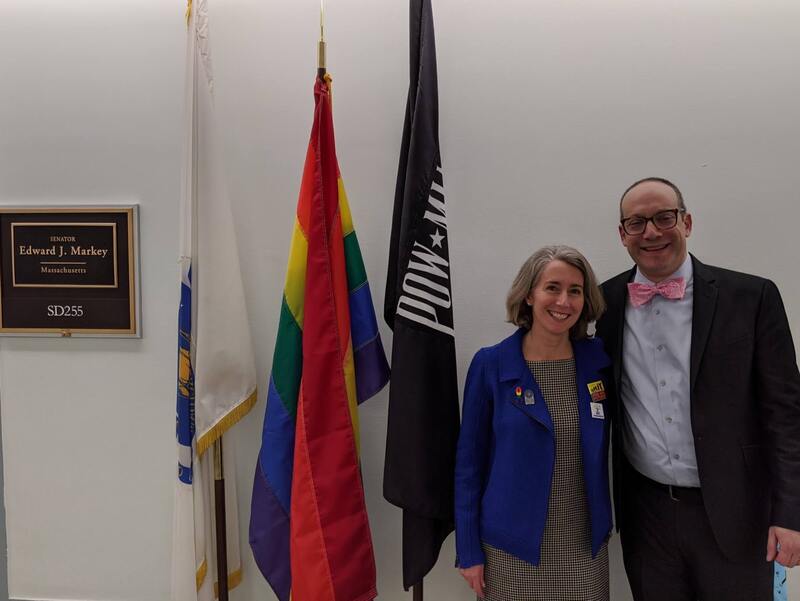

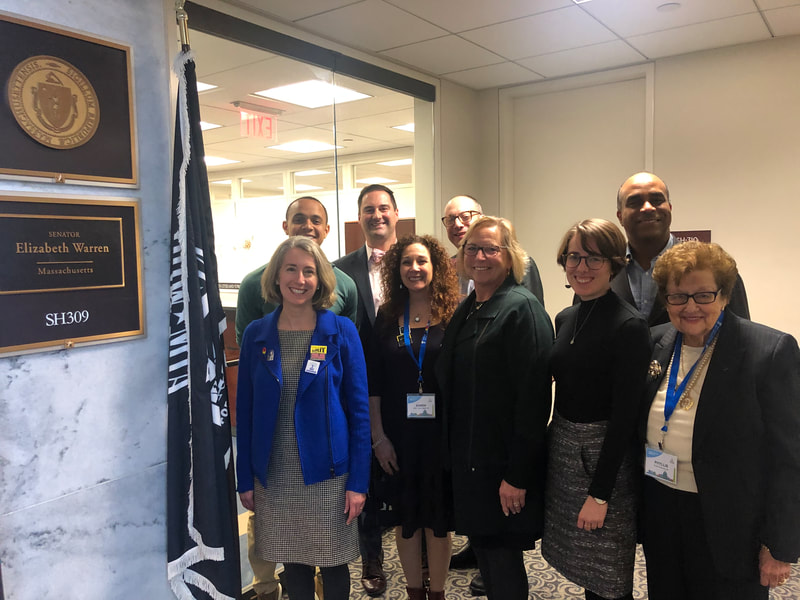


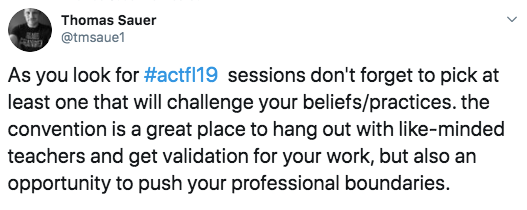

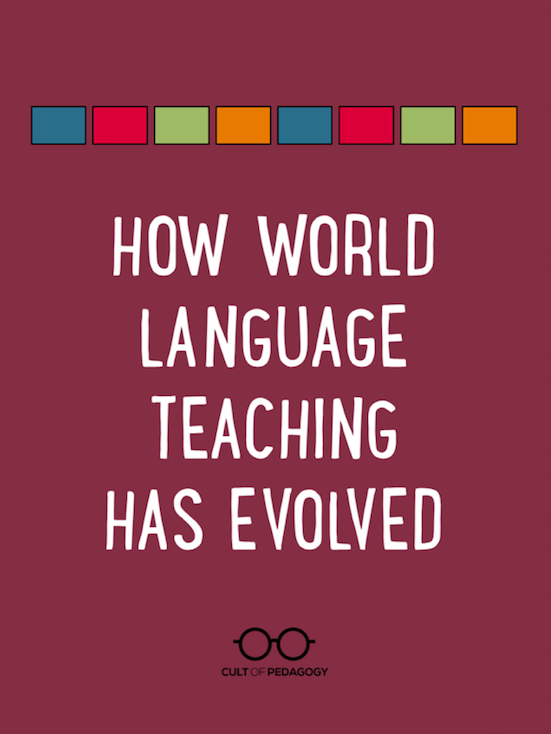
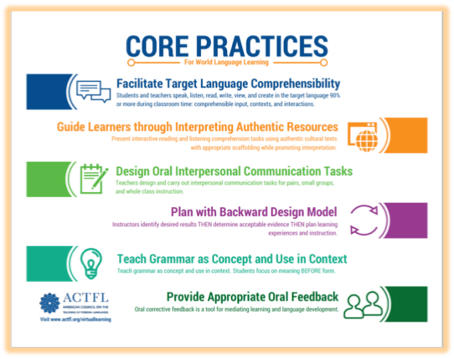
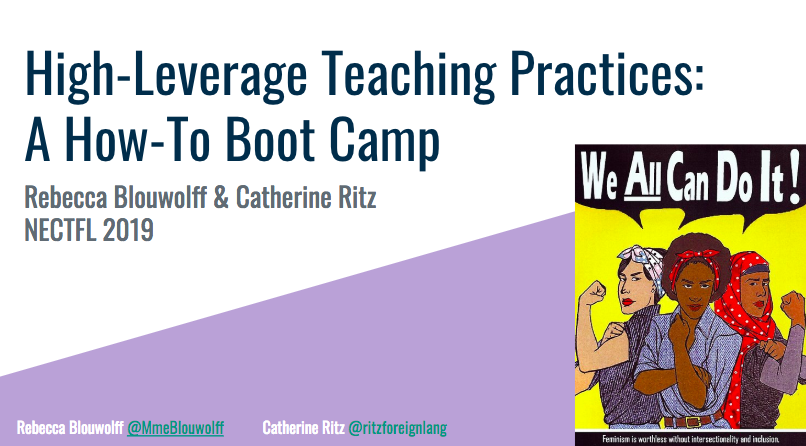


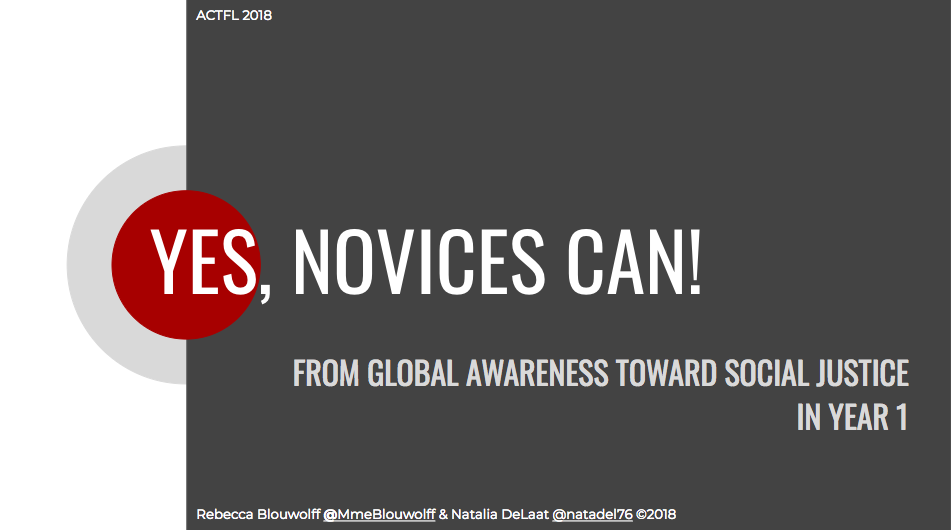

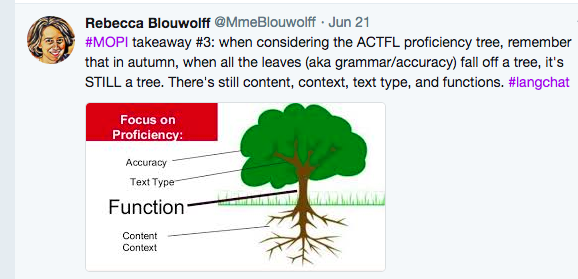








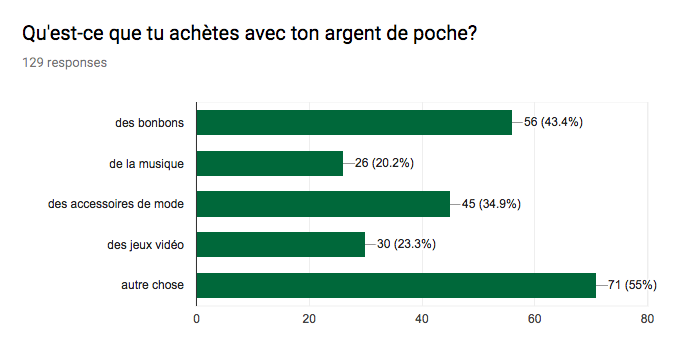
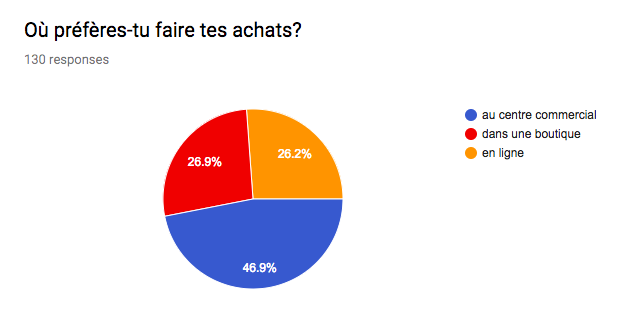

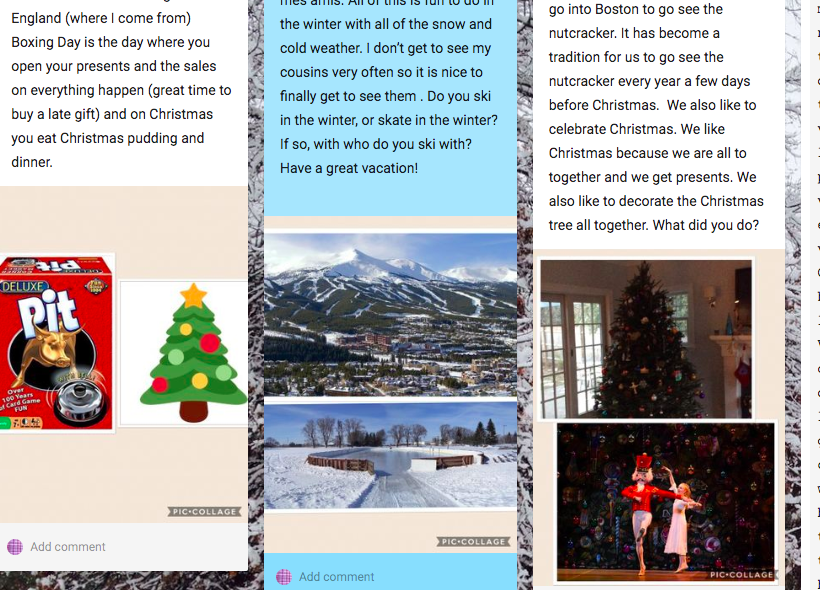
 RSS Feed
RSS Feed
